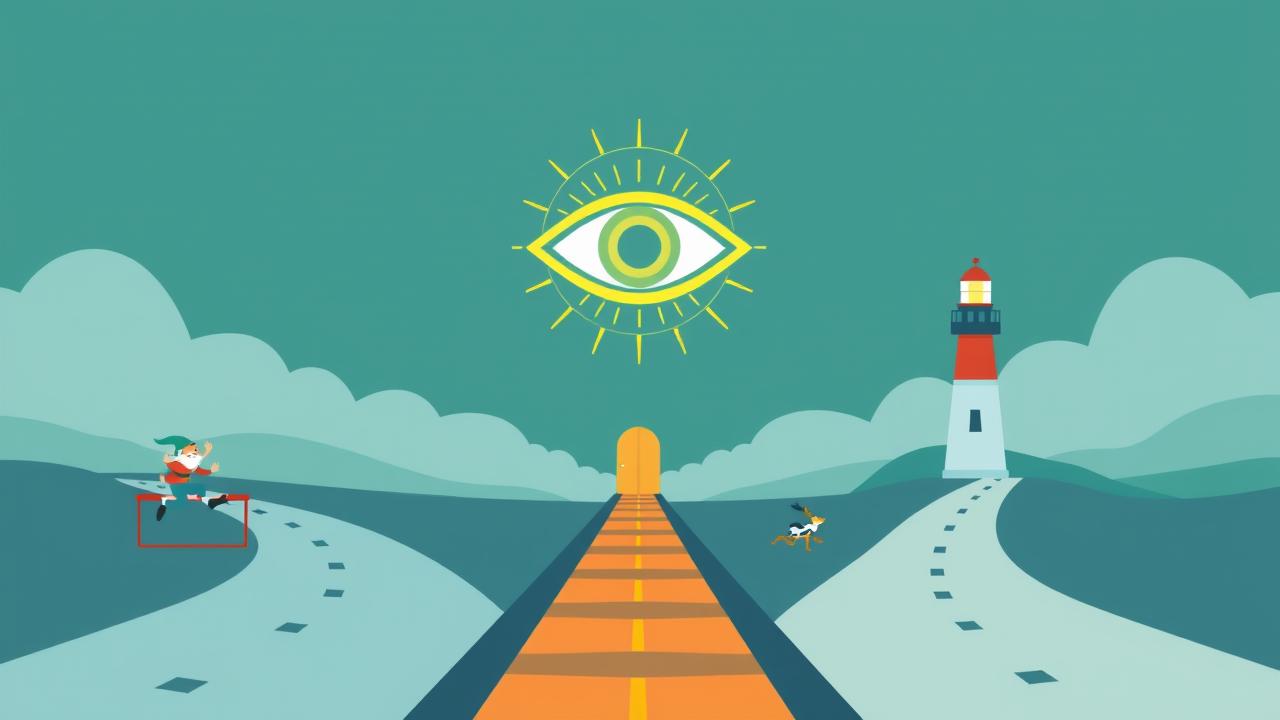The Battlefield, Mapped
There are essentially three trails out of this wilderness, each with its own dangers and rewards. Understanding them is your first move toward taking back control.
- The Guided Path: Working with a non-profit agency to manage your payments, lower interest rates, and repay everything you owe on a fixed schedule. It’s a disciplined march, not a sprint.
- The Ambush Alley: Hiring a for-profit company to negotiate settlements, where you pay less than the original balance. It sounds like a miracle, but this path is riddled with credit-destroying traps and potential legal battles.
- The Lone Wolf Trail: Forging your own way out through direct negotiation with creditors, personal consolidation loans, or disciplined payoff strategies. This requires the most grit but offers the greatest control.
What ‘Relief’ Actually Means
The term “debt relief” is a slippery one, a marketing phrase that can mean anything from getting a slightly better interest rate to blowing up your financial life for a decade. At its core, it’s any structured action designed to resolve what you owe. But the methods are brutally different.
Distinguish between methods where debt is repaid in full (sometimes with lower interest) vs. methods where debt is settled for less than owed. The first path, often paved by non-profit credit counseling, aims to preserve your honor and, as much as possible, your credit standing. You pay what you agreed to pay, just under more manageable terms. The second path is a form of financial surrender. You’re admitting you cannot pay it all, and you’re asking your creditors to take a fraction of the total and walk away. Some companies will blur these lines, offering services to consolidate credit card debt that look like one thing but operate like another, so clarity is not just a virtue; it’s your only shield.
The Guided Path: Debt Management Plans
The fluorescent lights of the truck stop diner hummed, casting a greasy yellow glow on the stack of unopened envelopes in the passenger seat. For Banks, a long-haul pipeline technician, this stack was a physical manifestation of failure. Each bill was a reminder of a bad decision, a necessary repair, or a lonely night on the road where swiping a card was easier than feeling the silence. The numbers were a cold knot in his stomach, a beast that rode with him across countless miles of desolate highway.
He finally broke after a call from his sister, her voice tight with a concern he could no longer deflect. That night, in a cheap motel room in rural Nebraska, he didn’t search for a quick fix. He searched for an ally. He found it in a non-profit credit counseling agency. They didn’t promise miracles; they promised a plan. A debt management plan, or DMP. They would negotiate with his creditors for lower interest rates. He would make one, and only one, monthly payment to the agency. They would handle the rest.
It was a lifeline. Not a magic wand, but a rope. The hard truth is that debt management plans still require disciplined repayment, typically over 3 to 5 years, and interest rate reductions aren’t guaranteed. For Banks, it was the structure he craved. The single payment felt like taking aim at one target instead of being fired on from all sides. He traded his stack of threatening envelopes for a single, predictable payment and a finish line he could finally see. It was a long, grinding journey, but for the first time in years, he felt like he was the one driving.
A Hard Look in the Mirror
Before you commit to any path, you need to see the unvarnished pros and cons. The promises made by debt relief companies are often a world away from the reality people experience. This video is a vital gut check, breaking down what these programs truly deliver and what they cost you in the long run.
Source: Ascend on YouTube
The Siren Song of Settlement
The apartment was too small, the air thick with the scent of stale coffee and the low hum of her computer. Alessia, a medical billing coder, felt the walls closing in. The debt had started with a single emergency vet bill for her son’s cat and had metastasized, growing on high-interest credit cards until it had a life of its own. It was a predator, and the late-night television commercials promising to slay it for “pennies on the dollar” felt like salvation. The voice of the spokesman was so calm, so reassuring. He made it sound so simple.
The company she hired told her to stop paying her creditors immediately. Instead, she was to put that money into a special savings account they controlled. The plan was to starve the creditors out, then offer them a lump-sum debt settlement. The reality was a waking nightmare. The calls didn’t stop; they became more furious, more personal. Then came the letters, no longer on flimsy statement paper but on thick, ominous legal letterhead. One Tuesday afternoon, a notice was taped to her apartment door. She was being sued. Panicked, she called her “relief” company, only to discover a large portion of her savings had been eaten by their fees. Her credit score, once her pride, was in ruins. She wasn’t free; she was in a deeper, more terrifying hole than before. To her, this wasn’t how you get out of debt; this was how you lose your soul.
Her experience stands as a brutal counterpoint to self-directed debt elimination strategies. Methods like the debt snowball method (paying off smallest debts first for psychological wins) or the debt avalanche method (tackling highest-interest debts first to save money) require discipline, but they keep you in control. You aren’t praying a stranger will save you; you are becoming your own rescuer, one deliberate payment at a time. The power stays in your hands, and your credit isn’t sacrificed on the altar of a quick fix.
The Truth About Those ‘Government-Backed’ Lifelines
There’s a persistent myth, fueled by robocalls and shady websites, that Uncle Sam has a secret stash of cash to wipe away your personal debt. A sort of get-out-of-jail-free card for your financial mistakes. It’s a tempting fantasy. And a complete fabrication. For the overwhelming majority of people trying to pay off credit card debt or personal loans, there are generally no free government programs.
Anyone who contacts you unsolicited, promising special access to government funds in exchange for an upfront fee, is a predator. The Federal Trade Commission (FTC) screams this from the rooftops, but the whispers of these scams are often louder. Real, government-involved programs are specific and narrow: they exist for federal student loans (like Income-Driven Repayment plans) or are tied to legal frameworks like bankruptcy. They don’t come from a cold call during dinner. The only thing a “government debt relief” scam will relieve you of is the money you have left.
Financial Triage and the Power of a Human Voice
The diagnosis landed like a physical blow. For Thiago, a freelance sound designer, his partner’s unexpected illness wasn’t just an emotional crisis; it was a financial bomb. The savings they’d carefully built evaporated in a blur of co-pays and prescriptions. Soon, the minimum payments on their cards became impossible. The terror of it was suffocating. His mind raced to the debt relief companies he’d heard about, but the stories of ruin like Alessia’s echoed in his research. He felt cornered.
One sleepless night, scrolling through forums, he saw a comment: “Call your bank first.” It seemed insane. Why would the source of his problem be the solution? But he was out of options. The next morning, with his heart hammering against his ribs, he dialed the number on the back of his highest-interest card. He expected a robot, an argument, a threat. What he got was a woman named Margot who simply asked, “How can I help?” He told her everything. He explained the medical bills, the lost income—the sheer financial hardship of it all. He didn’t make excuses; he just stated the facts. After a long pause, she told him about the bank’s own internal hardship program. They could temporarily reduce his interest rate to zero and lower his minimum payment for six months. No third-party company. No trashed credit score. Just breathing room.
This is the first line of defense many people ignore. Before turning to outside debt relief programs, which often require a minimum debt of $10,000 and proof you can’t make payments, call the creditor. The beast you’re fighting might just have a human face.
Alternative Paths to Freedom
There are ways to reorganize the fight without waving a white flag. A smart debt consolidation plan is less about relief and more about superior logistics. It involves taking out a new, lower-interest personal loan to pay off all your high-interest credit cards at once. Suddenly, you’re not fighting a multi-front war; you have one enemy, one payment, and a clear campaign timeline. Balance transfer cards can serve a similar purpose, offering a 0% introductory APR that gives you a window to attack the principal balance without interest fighting back. The catch? You have to pay it off before that window closes and the new, often sky-high, interest rate kicks in.
It’s about being strategic. Knowing the difference between bad debt vs good debt (high-interest credit cards vs. a sensible mortgage) helps you prioritize your targets. These methods, combined with the raw psychological power of the Snowball or Avalanche strategies, form the bedrock of a real, sustainable financial independence roadmap. It’s not about finding a savior; it’s about architecting your own escape.
Your Command Center and Tactical Gear
You wouldn’t go into battle without a map and equipment. Getting out of debt is no different. Forget thinking of budgeting apps as restrictive parents; think of them as your personal command center, giving you real-time intelligence on where your money is going. They show you where the weak points are in your financial perimeter.
Even more potent are the tools built around a debt payoff calculator. These aren’t just for numbers; they are engines of hope. Plugging in your balances and seeing how an extra $50 a month can shave years off your sentence is a profound act of empowerment. It transforms an insurmountable mountain of debt into a series of achievable hills. It makes the finish line feel real, tangible, and worth fighting for.
Questions from the Trenches
Is it worth doing a debt relief program?
That depends entirely on which program you choose and what you’re willing to sacrifice. A non-profit Debt Management Plan can be absolutely worth it if you’re drowning in interest but have the discipline to make consistent payments for 3-5 years. In contrast, many for-profit debt settlement programs are a trap, costing you more in shredded credit, legal fees, and taxable ‘forgiven’ debt than they save you. The question isn’t just “is it worth it,” but “what price am I willing to pay?” Sometimes, the best programs are the ones you run yourself.
How can I better manage my debt and avoid returning to it?
Getting out of debt is only half the war. Staying out is the other half. The most crucial of all tips to avoid debt is to sever the emotional ties to spending. Build a real budget—not a fantasy, but a brutally honest accounting of your income and expenses. Automate your savings, even if it’s just $20 a week. Build a small emergency fund so the next flat tire doesn’t become a credit card disaster. It’s about building a fortress, brick by painful brick, so you never have to fight this battle again.
Does debt relief hurt my credit score?
Yes, but the degree of damage varies wildly. Debt Settlement is catastrophic. You stop paying your bills, accounts go into default, and you may get sued—your score will be annihilated for up to seven years. A non-profit Debt Management Plan is far less damaging. A note may be made on your credit report that you’re in a plan, and the accounts are often closed, which can temporarily lower your score. However, because you’re making consistent, on-time payments, your score often recovers and can even improve by the time you’re done. It’s the difference between a controlled demolition and an earthquake.
How to pay off $30,000 in debt in 1 year?
It’s mathematically possible, but it requires a brutal, scorched-earth campaign. You’d need to free up $2,500 per month. This means either a drastic income increase (second job, high-value side hustle) or savage expense cuts (moving, selling a car, no spending on anything non-essential). The most critical move is to slash your interest rates. Call every creditor and ask for a hardship plan. Look for a consolidation loan or balance transfer card to halt interest accrual. Then, throw every single spare dollar at the principal. It’s a year of pure sacrifice, but it’s one year for a lifetime of freedom.
Your Armory & Allies
You are not alone in this fight. These organizations and resources provide intelligence, support, and legitimate guidance.
- Federal Trade Commission (FTC): Your best source for identifying and avoiding debt relief scams.
- Consumer Financial Protection Bureau (CFPB): Government-level information on your rights and options.
- National Foundation for Credit Counseling (NFCC): A network of reputable, non-profit credit counseling agencies that offer DMPs.
- Debt Reduction Services: Another well-regarded non-profit organization offering counseling and management plans.
- r/debtfree: A community of people sharing real stories, strategies, and encouragement.
Your First Step Is Here
The mountain of debt seems impossible to move. But you don’t move a mountain all at once. You move it one stone at a time. Forget the five-year plans and the overwhelming totals for just a moment. Your next step is not to solve everything. It’s to do one thing. Calculate the total balance on just one credit card. Open one past-due notice and read it. Or schedule one free, no-obligation call with a non-profit counselor from the NFCC. This isn’t about finding the perfect solution for all debt relief programs; it’s about taking one small piece of ground back. That’s where your power lies. It starts now.







